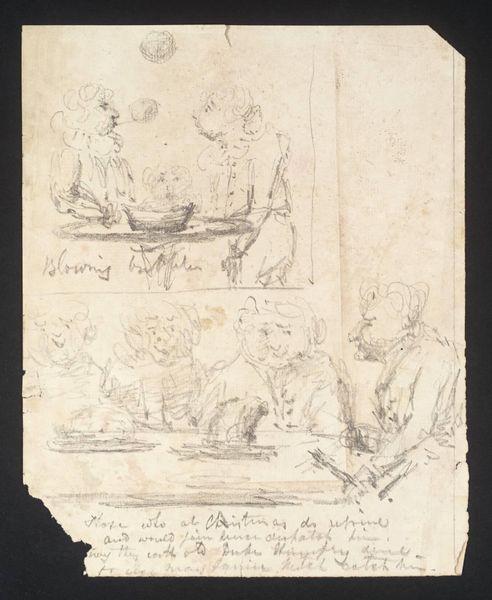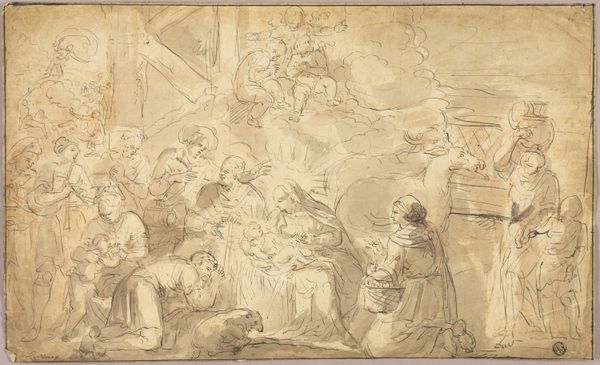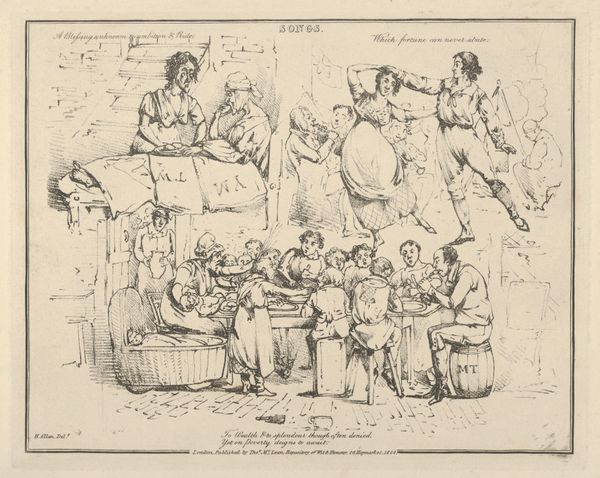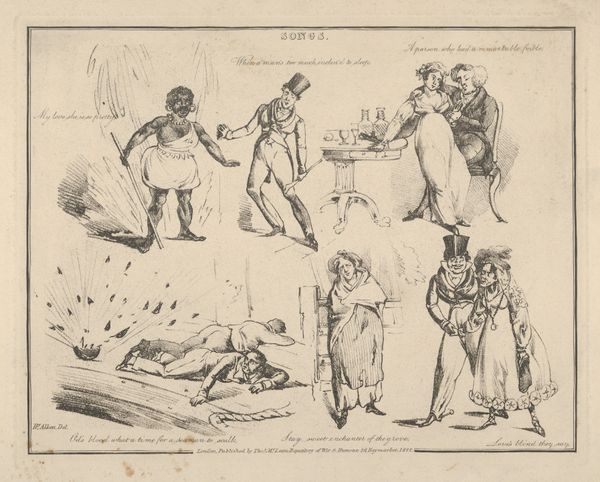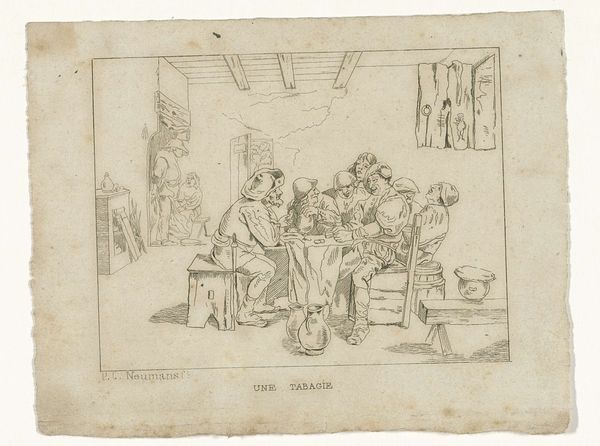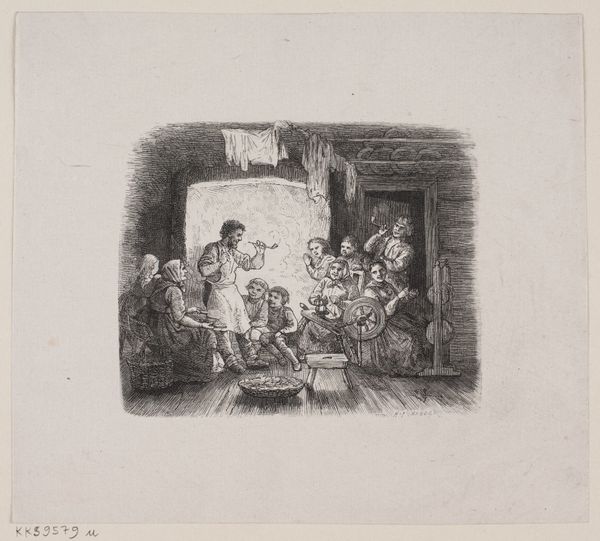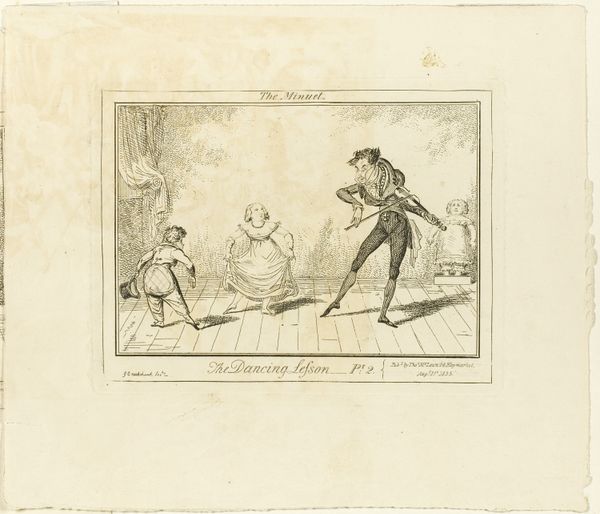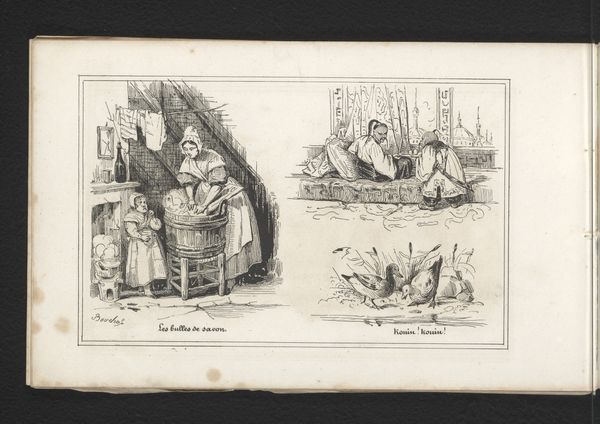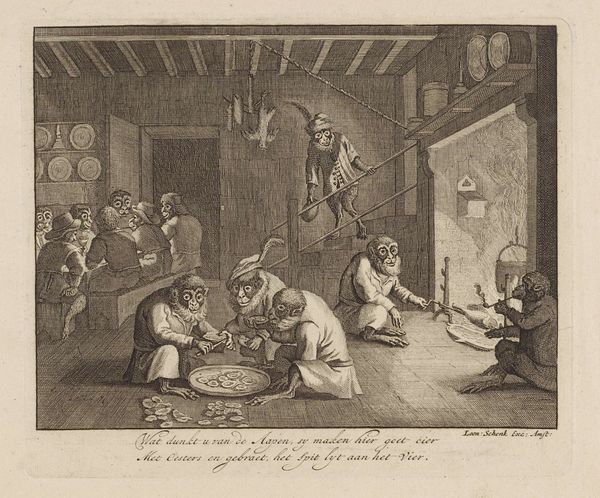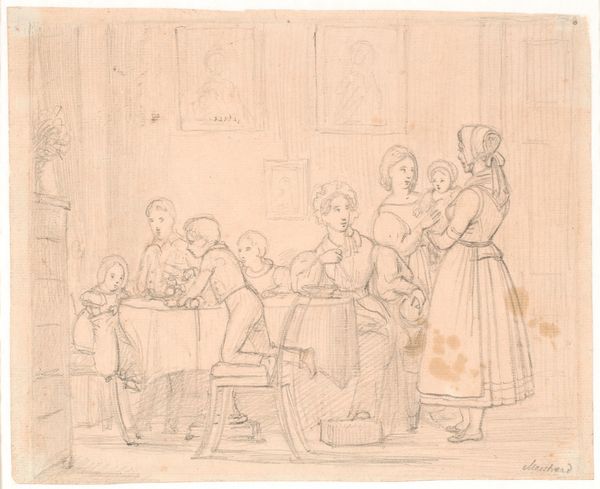
drawing, paper, ink
#
portrait
#
drawing
#
imaginative character sketch
#
toned paper
#
quirky sketch
#
sketch book
#
paper
#
personal sketchbook
#
ink
#
sketchwork
#
folk-art
#
sketchbook drawing
#
watercolour illustration
#
genre-painting
#
storyboard and sketchbook work
#
sketchbook art
Dimensions: height 150 mm, width 184 mm
Copyright: Rijks Museum: Open Domain
Editor: So, here we have "Sketches of a Woman Weighing Gold and Children," a drawing in ink by Christina Chalon, dating back to 1771. There's something about the everyday-ness of it, a peek into ordinary life... What catches your eye when you look at this, particularly given your area of expertise? Curator: I find myself drawn to the labor embedded within this sketch. Notice the composition. It's not a posed portrait, but a seemingly casual observation of domestic labor and childhood. The gold-weigher represents a clear economic function, a part of the 18th century Dutch mercantile system, and how essential it was even at home. The children playing; is their labor being ignored? Are they positioned here to demonstrate idle leisure as a display of success of mercantile labor? Editor: That’s interesting. I hadn't thought about the drawing itself as part of a bigger economic picture, but that makes sense. You mean the very *making* of the artwork too? The labour involved there? Curator: Precisely. Think about Chalon's process. Where did she source her materials: paper and ink. These objects become physical commodities circulating within economic systems and becoming available as resources. It suggests her engagement with a network of craft production, workshops, trade. Even the skill she demonstrates is a kind of specialized work being circulated and given worth. Who gets to spend their time developing these skills is a very important detail. What stories do they get to tell through them? Editor: So, it's about the materials themselves and their role in society back then, and how that ties into the picture we see? Thinking of Chalon, as a woman, gaining skills and the independence that brings through labour also opens new questions. Curator: Exactly! By focusing on the material aspects, and not just the imagery, we uncover layers of social context. These material remnants speak of skill, commerce and ultimately provide an important insight to Chalon and women like her during the era of mercantilism. Editor: That's fascinating! I will look differently at these everyday scenes now.
Comments
No comments
Be the first to comment and join the conversation on the ultimate creative platform.

